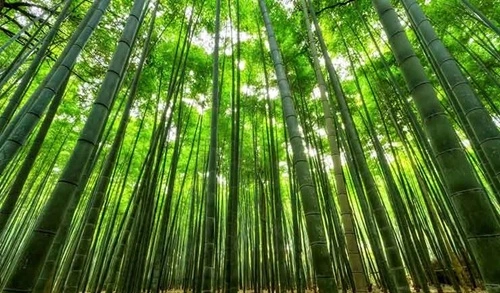Bamboo is used for construction, handicrafts, paper, agroforestry, and pulp, which makes it a crucial natural resource in India. From the uses to supporting the livelihood of rural and forested tribes, the bamboo crop is prioritised by the local authorities as well. More than 13.9 million hectares of land are used for bamboo farming, which harvest around 3.23 million tonnes of bamboo.
These numbers come from growing stocks, instead of total production, which makes it hard to estimate the exact production. These bamboo crops are usually termed as Growing Stock, Forest Area under Bamboo, or bearing area. So, the commercial production numbers by state may vary if calculated precisely through survey or commercial data. However, we are here with the top 5 largest bamboo-producing states in India 2025, based on estimates of growing stock.
Without wasting any more time, let’s take a deep dive into the top-performing states that lead with bamboo production every year.

1. Madhya Pradesh – 20.3% of India’s Bamboo Area
Madhya Pradesh remains the top bamboo producer with its 20.3% contribution to the total national bamboo area. As per data, there are about 1.84 million hectares of land dedicated to bamboo production out of 13.9 million hectares. The total share in production output is nearly 13-14% which makes it a top-ranking state. The key uses of bamboo are for making poles for construction or fencing purposes. Additionally, Bamboo is used for handicrafts, pulp and paper, scaffolding, and green materials. The major issue Madhya Pradesh is facing with bamboo production is unsustainable harvesting, forest management, and the decline of land in some areas.
2. Arunachal Pradesh – 12-13% of India’s Bamboo Area
Arunachal Pradesh contributes 12-13% of the land under bamboo cultivation out of the total national land for bamboo. There are about 1.57 million hectares of land under cultivation, which makes it share 13%. As most of India’s bamboo comes from forested and mountainous north-eastern states, Arunachal Pradesh’s per-hectare output may be less than that of other states. The production numbers have slightly declined over the years because of inaccessible terrain. The key regions used for Bamboo production are from the north-eastern parts, which include dense forests.
3. Maharashtra – 10% of India’s Bamboo Area
Maharashtra is often listed among the top three states in bamboo resource statistics. It is reported to have around 1.35 million hectares under bamboo. As a percentage of total bamboo-bearing area in India (~ 13.96 million hectares), that works out to about 9-10% or possibly slightly more. The bamboo production in Maharashtra is often used for furniture, craft, pulp, activated carbon, and local construction. The key issues Maharashtra is dealing with are forest access permissions, balancing extraction and conservation, and maintaining the quality of bamboo culms.
4. Odisha – 8-9% of India’s Bamboo Area
Odisha ranks fourth with 1.12 million hectares of land under bamboo cultivation. The percentage share compared to India’s total bamboo area under cultivation is 8-9% which consists of forest and forest fringe areas. The growing stock or green weight is somewhat lower compared to other states, but Odisha has a strong production potential. The key regions that have the highest bamboo density are coastal hills and forested interior. These species are famous for better quality, strength, and weight.
5. Assam – 7-8% of India’s Bamboo Area
Assam also features among the top five states with large bamboo areas and resources. In one report, Assam’s bamboo-bearing area (forest portion) is about 10,659 square kilometres (≈ 1.0659 million hectares), and Assam holds about 7.1% of the total national bamboo-bearing forest area in one dataset. Assam also has about 9.6% of the growing stock of bamboo green weight among forested stock. The popular uses of Assam’s Bamboo production are for handicrafts, housing, local use, fencing, and culms.
Conclusion
These five states, Madhya Pradesh, Arunachal Pradesh, Maharashtra, Odisha, and Assam, alone have a combined share of more than 60% in green weight or Bamboo land under cultivation. Most bamboo cultivation regions are from forested land, which makes it hard to pinpoint the exact production number for government agencies as well. Improvements in data collection, like harvested tonnage instead of area or stock, can help improve the infrastructure.